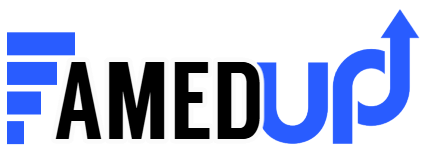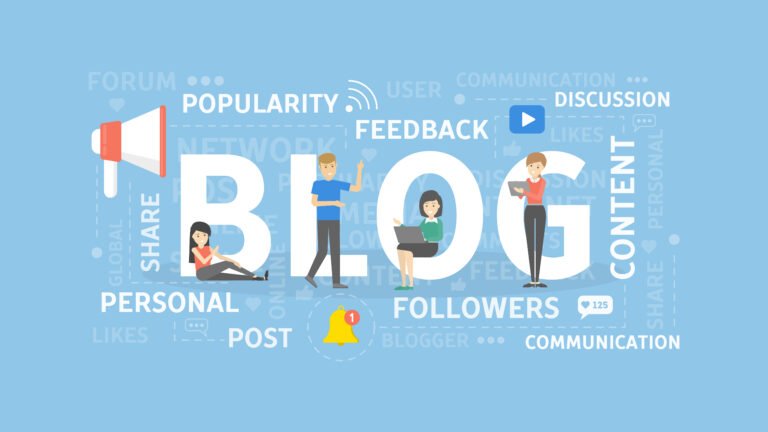Setting the Stage: Traffic Wars in 2025
In 2025, online visibility is the currency of success—especially for eCommerce brands and service providers. With millions of online stores competing for attention, the battle to drive high-quality traffic has never been more intense.
Whether you’re selling products or digital services like social media marketing packages, the challenge remains the same:
How do you get the right people to your site—consistently and affordably?
That’s where two of the most powerful traffic channels come in: Blogging and Paid Advertising.

Why Online Traffic Matters More Than Ever
Every visitor to your site is a potential lead, subscriber, or paying customer. But not all traffic is created equal. With rising ad costs and ever-changing algorithms, brands are being forced to think smarter about how they generate traffic.
- More traffic = more opportunities to sell
- Consistent traffic = stable business growth
- Targeted traffic = higher conversion rates
Whether your goal is brand awareness, engagement, or direct sales—traffic is the starting point.
Overview: Blogging vs. Paid Ads as Traffic Strategies
Both blogging and paid ads can drive serious traffic, but they do so in very different ways:
- Blogging builds organic traffic over time through content and SEO
- Paid ads offer instant visibility but require ongoing budget
In this guide, we’ll break down the pros, cons, and real-world use cases for each—so you can decide which strategy (or combination) works best for your online store in 2025.
2. Blogging: The Long-Term Organic Strategy
2.1 What Blogging Can Do for Your Brand
Blogging isn’t just about writing articles—it’s about building a content engine that attracts visitors day after day, month after month. When you blog with SEO in mind, you’re creating content that ranks on Google, answers your audience’s questions, and leads them directly to your store.
Key benefits:
- Drives organic traffic without paying per click
- Positions your brand as a trusted authority
- Educates, nurtures, and pre-sells your products or services
- Supports social media and email content with long-form value
🧠 Example: A blog titled “How to Grow Your Instagram Followers Organically in 2025” can attract consistent traffic—and convert readers into buyers of your Instagram growth service.
2.2 Pros of Blogging
✅ Cost-effective over time – You invest upfront in content, but once it ranks, it brings free traffic for months or years.
✅ Builds SEO equity – The more content and backlinks you build, the stronger your site becomes.
✅ Engages your audience – Blog posts allow for storytelling, product education, and trust-building.
✅ Pairs well with other channels – Your blog can feed your social media, email marketing, and even paid ads.
2.3 Cons of Blogging
⚠️ Takes time to see results – It often takes 3–6 months (or more) for a blog to rank and generate traffic.
⚠️ Requires consistency – One or two blog posts won’t move the needle. You need a content plan and schedule.
⚠️ Needs SEO knowledge – If your posts aren’t optimized, they may never be found.
⚠️ Content creation can be demanding – Especially if you’re juggling writing, editing, visuals, and strategy.
3. Paid Ads: The Fast-Track Growth Engine
3.1 What Paid Ads Can Do for Your Store
If blogging is a marathon, paid ads are a sprint. With platforms like Facebook, Instagram, TikTok, YouTube, and Google Ads, you can instantly drive targeted visitors to your online store—often within hours of launching a campaign.
Key benefits:
- Promote specific products or services quickly
- Reach custom audiences based on interests, behaviors, and demographics
- Scale your traffic and revenue with the right budget and creative
- Retarget users who’ve already visited your site but didn’t convert
🛍️ Example: Want to boost sales on a new service like TikTok follower packages? Run an Instagram or TikTok ad targeting creators aged 18–34 in your niche.
3.2 Pros of Paid Advertising
✅ Instant traffic – See clicks, visits, and sales within hours.
✅ Highly targeted – Choose who sees your ads by age, location, device, interests, and more.
✅ Data-rich – Platforms provide detailed insights to refine campaigns and improve ROI.
✅ Great for promotions – Perfect for launching new products, running sales, or driving urgency.
✅ Scalable – Increase budget to reach more people (if your funnel converts well).
3.3 Cons of Paid Advertising
⚠️ Can get expensive fast – Especially in competitive niches (e.g., marketing, eCommerce, fashion).
⚠️ Short-term – Once you stop paying, traffic stops too.
⚠️ Ad fatigue is real – Creatives can burn out quickly. You’ll need to test and refresh regularly.
⚠️ Requires skill to get ROI – Without proper targeting, copy, or funnel, your ads can lose money.
4. Head-to-Head Comparison: Which One Wins?
Now that you understand how blogging and paid ads work individually, let’s compare them side by side based on critical factors like cost, traffic quality, scalability, and long-term value.
4.1 Cost vs. ROI
| Factor | Blogging | Paid Ads |
| Initial Cost | Low (mostly time or content writing cost) | High (ad spend starts from day one) |
| Ongoing Cost | Minimal (occasional updates) | Continuous (pay-per-click or impressions) |
| ROI Timeline | Long-term, compounding | Short-term, immediate |
💡 Verdict: Blogging is more cost-effective over time. Paid ads deliver faster ROI but can become costly without a solid funnel.
4.2 Traffic Quality
| Factor | Blogging | Paid Ads |
| User Intent | High (visitors search with purpose) | Mixed (depends on ad targeting) |
| Bounce Rate | Lower with quality content | Often higher if users aren’t ready to buy |
| Conversion Potential | Strong with trust built | Strong with compelling offers and urgency |
💡 Verdict: Blog traffic often has higher intent, but paid ads let you engineer urgency and conversions with creative offers.
4.3 Sustainability & Scalability
| Factor | Blogging | Paid Ads |
| Scalability | Slow but steady | Fast and flexible |
| Sustainability | Long-term content value | Ends when budget runs out |
| Dependence | Less platform-dependent | Heavily platform-dependent (e.g., Facebook, Google) |
💡 Verdict: Blogging builds a sustainable foundation. Paid ads are scalable—but fragile if platform costs rise or accounts get flagged.
4.4 Analytics & Optimization
Both blogging and ads offer analytics, but they differ in what you can control:
- Blogging shows long-term SEO growth, engagement trends, and content performance.
- Ads provide immediate feedback on audience targeting, creative testing, and conversion funnels.
💡 Verdict: Ads are better for fast testing. Blogs are better for understanding what your audience values long-term.
5. Best of Both Worlds: Combining Blogging with Paid Ads
Why choose one when you can have both? In 2025, the most successful online stores and marketers combine blogging and paid ads to maximize reach, conversions, and long-term growth. When used together, they can create a traffic engine that feeds itself.
5.1 Why You Shouldn’t Choose Just One
Blogging and paid ads work best when they support each other:
- Use blog content to build trust and educate your audience.
- Use paid ads to drive fast traffic to high-converting blog posts or product pages.
- Use blog data (like popular posts) to guide ad campaigns.
- Use ads to retarget blog readers who didn’t convert.
📈 Example Strategy:
Write a blog titled “Top 10 Ways to Grow on TikTok in 2025”, then run a Facebook ad retargeting visitors to that blog with an offer for your TikTok growth service.
5.2 Smart Strategy for 2025
Here’s a sample approach that balances both:
Step 1: Create High-Value Blog Content
- Target long-tail keywords relevant to your services
- Answer common questions and pain points
- Include internal links to your product/service pages
Step 2: Promote with Paid Ads
- Boost your blog posts on social platforms for extra visibility
- Run conversion-focused ads for your services
- Use lookalike audiences based on blog readers
Step 3: Retarget and Convert
- Use Facebook Pixel or TikTok Pixel to track visitors
- Retarget users with limited-time offers or testimonials
- A/B test landing pages linked from blog posts
Step 4: Analyze and Scale
- See which blog topics attract the best traffic
- Use ad data to refine your messaging and offers
- Double down on high-performing combinations
6. Conclusion: What’s Right for Your Online Store?
When it comes to traffic generation in 2025, it’s not about choosing blogging vs. paid ads—it’s about understanding how and when to use each one.
If you’re running an online store—especially one that sells social media marketing services—your goal should be sustainable traffic with strong conversion potential. Blogging and paid ads both help you get there, but in different ways:
When to Prioritize Blogging
Choose blogging if you want:
- Long-term organic traffic that builds over time
- Strong SEO presence and credibility in your niche
- Content that supports your social media and email strategy
- A way to educate, build trust, and pre-sell your services
When to Prioritize Paid Ads
Use paid ads if you need:
- Immediate traffic and leads
- A way to promote limited-time offers or new services
- Scalable results with a solid ad funnel
- Data to quickly test what messaging works
Final Recommendation: Use Both, Strategically
The smartest marketers in 2025 use blogging to build authority and trust, and paid ads to accelerate reach and conversions. Your blog can serve as the foundation for retargeting, lead capture, and long-term SEO—while ads give you the power to scale fast when needed.
Your Action Plan
✅ Start a blog with 3–5 high-value posts targeting your ideal customer
✅ Use SEO best practices to rank on Google
✅ Run paid ads to drive traffic to your blog or service pages
✅ Retarget blog visitors with exclusive offers
✅ Review analytics monthly and optimize your strategy
Read Also: The Perfect Blog and Social Media Combo Strategy for 2025


